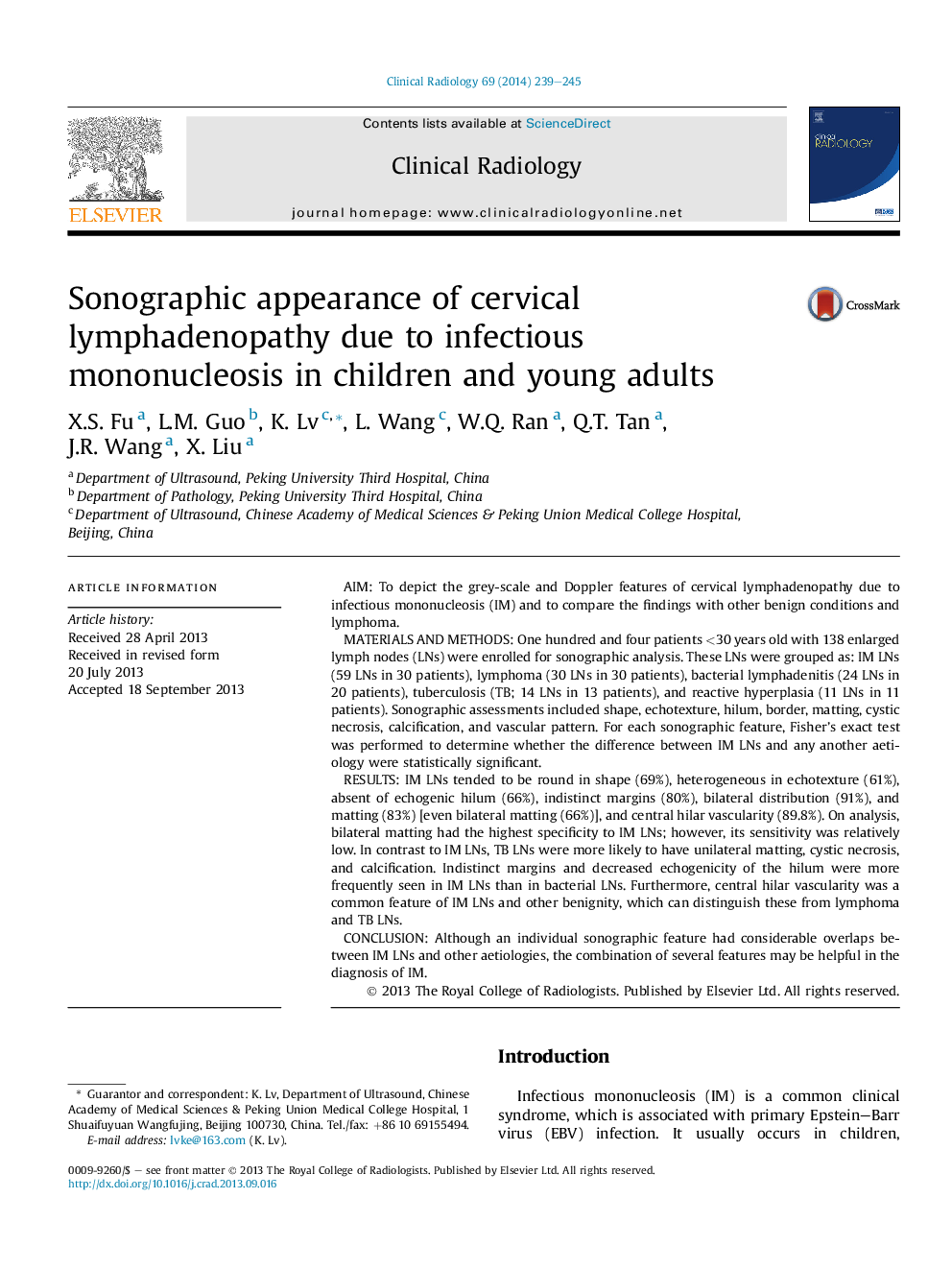| Article ID | Journal | Published Year | Pages | File Type |
|---|---|---|---|---|
| 3982041 | Clinical Radiology | 2014 | 7 Pages |
AimTo depict the grey-scale and Doppler features of cervical lymphadenopathy due to infectious mononucleosis (IM) and to compare the findings with other benign conditions and lymphoma.Materials and methodsOne hundred and four patients <30 years old with 138 enlarged lymph nodes (LNs) were enrolled for sonographic analysis. These LNs were grouped as: IM LNs (59 LNs in 30 patients), lymphoma (30 LNs in 30 patients), bacterial lymphadenitis (24 LNs in 20 patients), tuberculosis (TB; 14 LNs in 13 patients), and reactive hyperplasia (11 LNs in 11 patients). Sonographic assessments included shape, echotexture, hilum, border, matting, cystic necrosis, calcification, and vascular pattern. For each sonographic feature, Fisher's exact test was performed to determine whether the difference between IM LNs and any another aetiology were statistically significant.ResultsIM LNs tended to be round in shape (69%), heterogeneous in echotexture (61%), absent of echogenic hilum (66%), indistinct margins (80%), bilateral distribution (91%), and matting (83%) [even bilateral matting (66%)], and central hilar vascularity (89.8%). On analysis, bilateral matting had the highest specificity to IM LNs; however, its sensitivity was relatively low. In contrast to IM LNs, TB LNs were more likely to have unilateral matting, cystic necrosis, and calcification. Indistinct margins and decreased echogenicity of the hilum were more frequently seen in IM LNs than in bacterial LNs. Furthermore, central hilar vascularity was a common feature of IM LNs and other benignity, which can distinguish these from lymphoma and TB LNs.ConclusionAlthough an individual sonographic feature had considerable overlaps between IM LNs and other aetiologies, the combination of several features may be helpful in the diagnosis of IM.
